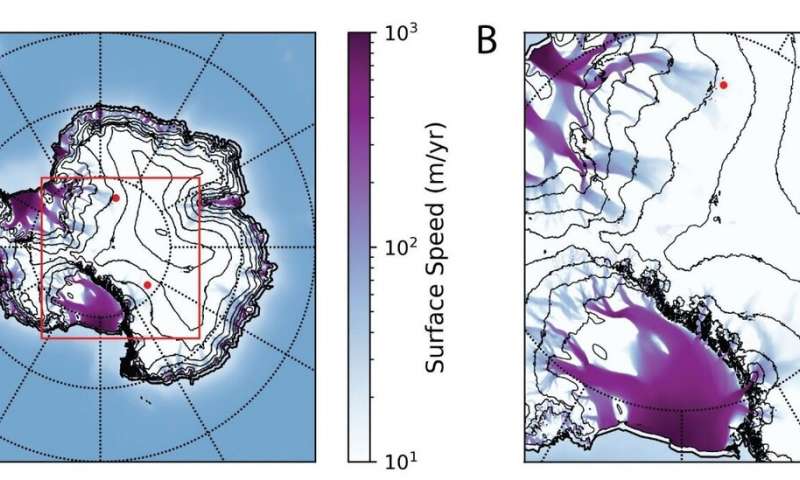Study provides new explanation for neutrino anomalies in Antarctica
A new research paper co-authored by a Virginia Tech assistant professor of physics provides a new explanation for two recent strange events that occurred in Antarctica—high-energy neutrinos appearing to come up out of the Earth on their own accord and head skyward.
一篇由弗吉尼亚理工大学物理系助理教授共同撰写的一篇新的研究论文对最近发生在南极洲的两起奇怪事件提供了新的解释:高能中微子似乎是自动从地球上冒出来并向天空飞去的。
The anomalies occurred in 2016 and 2018 and were discovered by scientists searching for ultra-high-energy cosmic rays and neutrinos coming from space, all tracked by an array of radio antennas attached to a balloon floating roughly 23 miles above the South Pole. Neutrinos are exceedingly small particles, created in a number of ways, including exploding stars and gamma ray bursts. They are everywhere within the universe and are tiny enough to pass through just about any object, from people to lead to buildings and the Earth itself.
这些异常现象发生在2016年和2018年,是科学家们在寻找来自太空的超高能宇宙射线和中微子时发现的。这些发现全都是由一系列无线电天线跟踪的,这些天线连接在一个漂浮在南极上空约23英里的气球上。中微子是非常小的粒子,以多种方式产生(比如恒星爆炸和伽马射线爆发)。它们在宇宙中无处不在,小到几乎可以穿过任何物体——从人到建筑物,再到地球本身。
The events were discovered by scientists at the ANITA experiment—that’s short for Antarctic Impulsive Transient Antenna, started in 2006—in the South Pole. Twice, ANITA scientists discovered radio signals mimicking highly energetic neutrinos seemingly coming upward out of the ground on their own accord. Scientists remain perplexed by the activity, with some 40 papers so far giving wildly different answers—the pulses are neutrinos that passed unencumbered through the entire core of Earth and came out of the ground; the pulses are the long sought-after “fourth” neutrino known as the sterile neutrino; the mysterious “dark matter” of space is to blame; or this is an entirely unknown frontier of particle and/or astrophysics physics begging for a Nobel.
这些事件是科学家在ANITA实验(南极脉冲瞬变天线实验,2006年在南极展开)中发现的。ANITA的科学家们两次发现了类似高能中微子的无线电信号,这些中微子似乎是自发地从地下冒出来的。科学家们仍然对这一活动感到困惑,迄今为止,大约有40篇论文给出了迥然不同的答案——脉冲是中微子,它们毫无阻碍地穿过整个地球核心,从地面出来;这些脉冲是人们长期以来追捧的“第四”中微子,即无菌中微子...太空中神秘的“暗物质”或者这是一个完全未知的粒子和/或天体物理学的前沿领域,每一个有关发现都有可能获得诺贝尔奖。
Read more at Phys.org
翻译:运营人员











